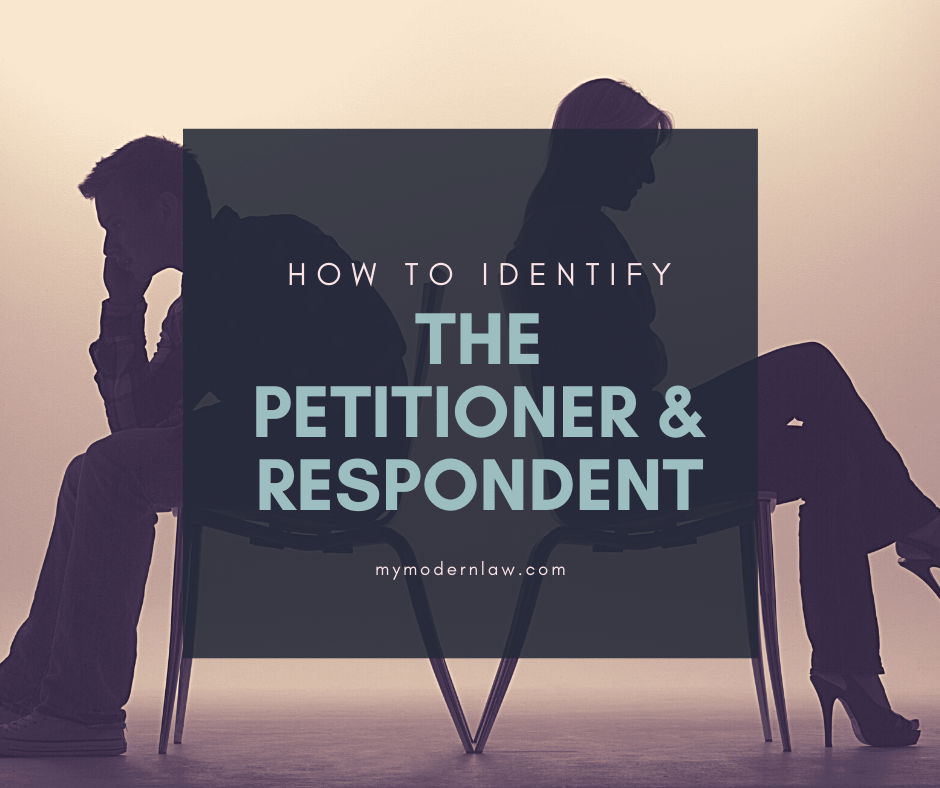A divorce can only occur after the divorce paperwork is filed. For this to happen, there needs to be a petitioner and a respondent. It’s important to understand what each of these terms means and the roles that each plays in the divorce. Let’s compare and contrast the petitioner vs respondent in a divorce.
What Does the Petitioner Do?
The petitioner is the spouse who files for the dissolution of marriage. In Arizona, dissolution of marriage is simply the term used for divorce on all of the court papers. It means the same thing.
When you file your petition for dissolution of marriage, you will file it with the Clerk of the Superior Court. This written petition will require that you pay a filing fee when you file. If you are unable to pay the cost of filing, you can ask the court to defer the payment, so you can pay it later. You could also ask the court to waive the fee by filing an application that you turn into the Clerk of the Superior Court.
The petition that is filed is a legal paper that is essentially asking the court to end your marriage and to issue any other orders that might be required to handle things like property and debt division, financial support, parenting time, requests for custody, etc. It’s important to keep in mind that typically the court can’t give a spouse anything that’s not requested and included in the petition you file.
You can fill out and file the petition on your own. However, there’s a risk that you might forget to add something important to the petition, or that you fill it out incorrectly, which would mean you have to start over. You might want to have an attorney help you, or at least go over the petition with you after you have filled it out. This can help to prevent any mistakes from being made.
Other paperwork that will be needed when filing includes the notice of right to convert health insurance, a joint preliminary injunction, and a creditor notice. You also need to file the summons, which is a legal document that lets your spouse, the respondent, know that the divorce case has been filed and that they need to take some type of action if they want to be heard by the court.
The petitioner must then serve their spouse with the divorce papers. The papers can be served in several ways. Petitioners may decide that they want to hire a private process server to deliver the papers to their spouse. The cost for this can vary. Another option is to have the papers served by a sheriff’s deputy. This tends to be less expensive than hiring a process server. These are the most common ways of serving divorce papers.
What Does the Respondent Do?
The respondent is the person who receives the divorce papers from their spouse. The person who receives the paperwork may already be expecting it if they’ve talked with their spouse about divorce. However, it could also come out of the blue. Whether they are expecting the paperwork or not, it can be jarring because you are now going through the formal process of dissolving your marriage. It can truly feel like a match of petitioner vs respondent.
The respondent is required to respond to the paperwork promptly. In Arizona, they will have 20 days to respond to the petition by filing a responsive pleading. The 20-day timeline begins on the day the respondent received the petition. If they do not respond in 20 days (or 30 days if they are out of state), the petitioner can then file a request for default. If this happens, it typically means that you can’t contest anything that is in the petition.
Naturally, you don’t want this to happen, because you will immediately be at a severe disadvantage and will not get what you may deserve in the divorce.
The respondent needs to read the petition for divorce and understand what it all means. If they agree with everything in the petition, they don’t have to respond. However, if there are areas where they disagree, they will need to file a response pleading that contests what is in the petition. This will initiate a contested divorce.
If you have minor children, make sure you are filling out and using the correct response forms. There are two options—one for divorces without minor children and one with minor children. If the respondent has any questions or concerns, they should talk with a family law attorney right away. They have to remember that they have a limited time to respond, and they need to do it right. It’s often better to have the advice of an attorney just to be sure there are no mistakes. This is a very important step in the divorce process.
Petitioner vs Respondent
One of the common questions that come up is whether it’s better to be the petitioner or the respondent. For the most part, it doesn’t matter. Arizona is a no-fault divorce state, so you don’t need to have any reasons for getting a divorce other than it’s something you want to do because you and your spouse no longer want to be together.
However, being the petitioner does give you a slight advantage at least when it comes to how you feel. You may feel like you are more in charge, and you are the one who begins to set the terms that you want in the divorce.
What Happens Next?
If there are areas where the parties don’t agree, they will move ahead with the divorce process, which often included negotiation. The parties will often try to come to agreements, so it doesn’t come to a rigorous battle of petitioner vs respondent. They can settle the divorce without needing to go to trial. This gives them more control over what happens in the divorce since the court will not be the ones who are making all of the decisions. However, if there are still areas where they can’t agree, it will eventually have to go to litigation. Although you can represent yourself in a divorce, having attorneys help can make the process easier at each step.






